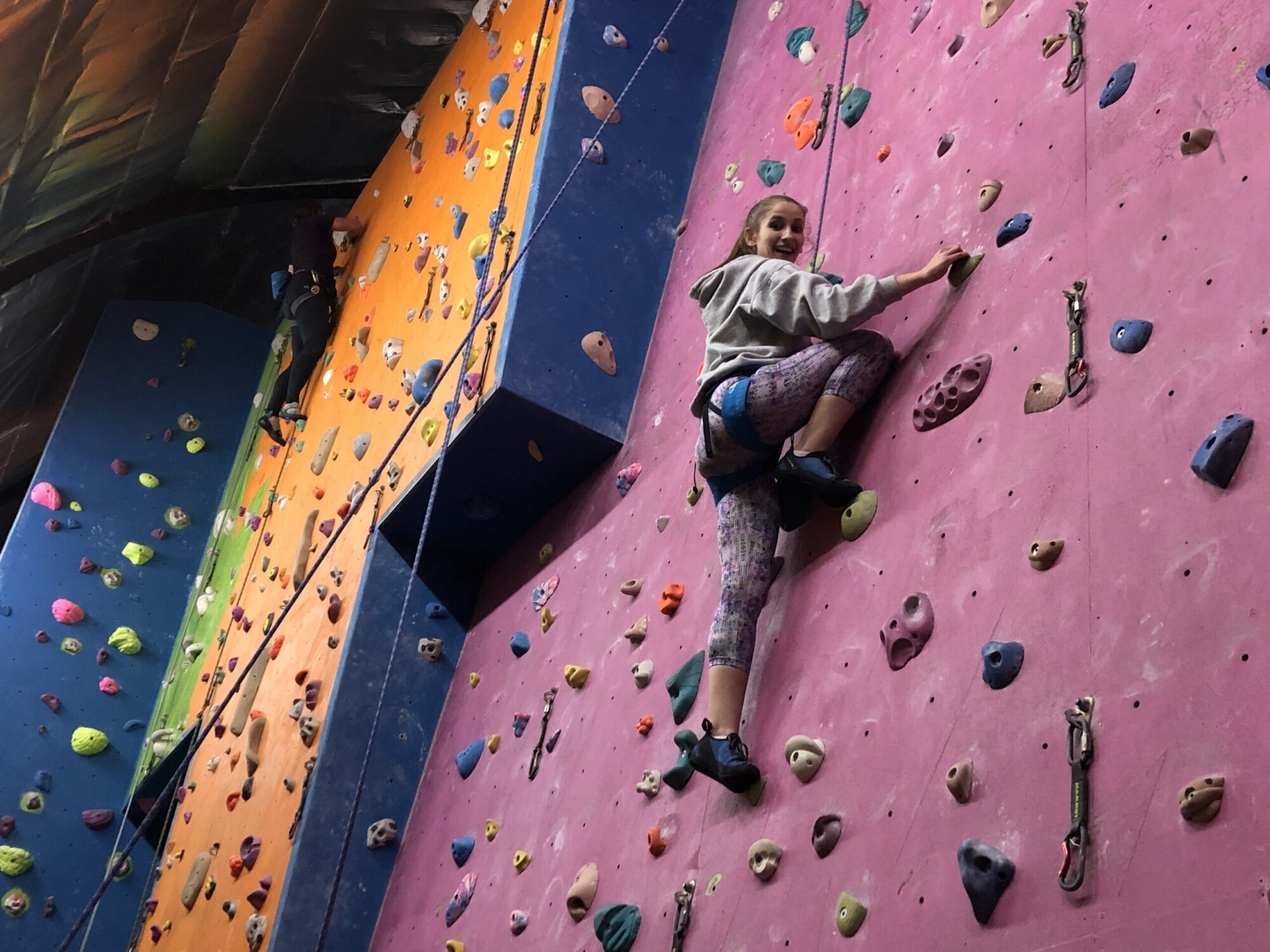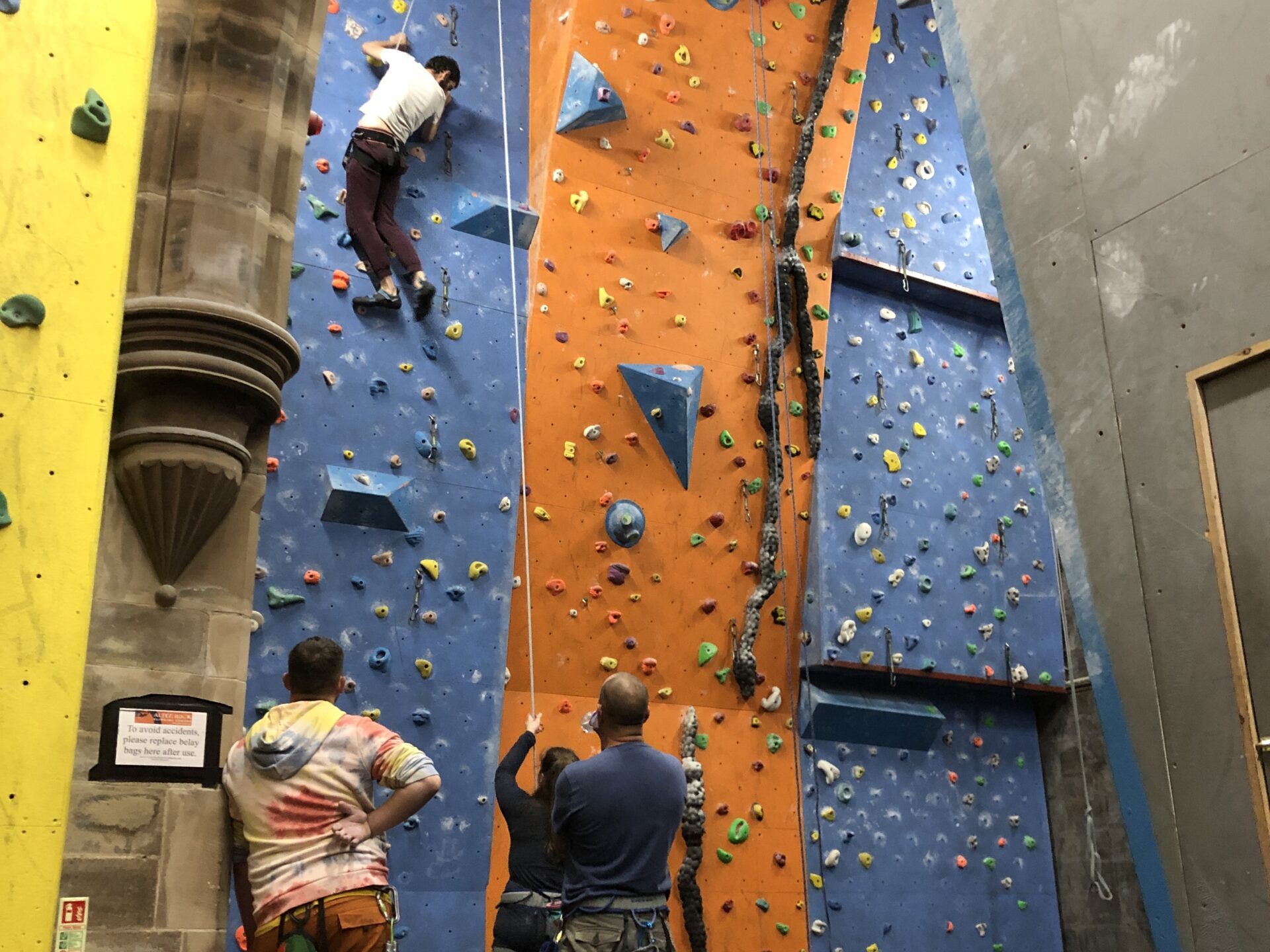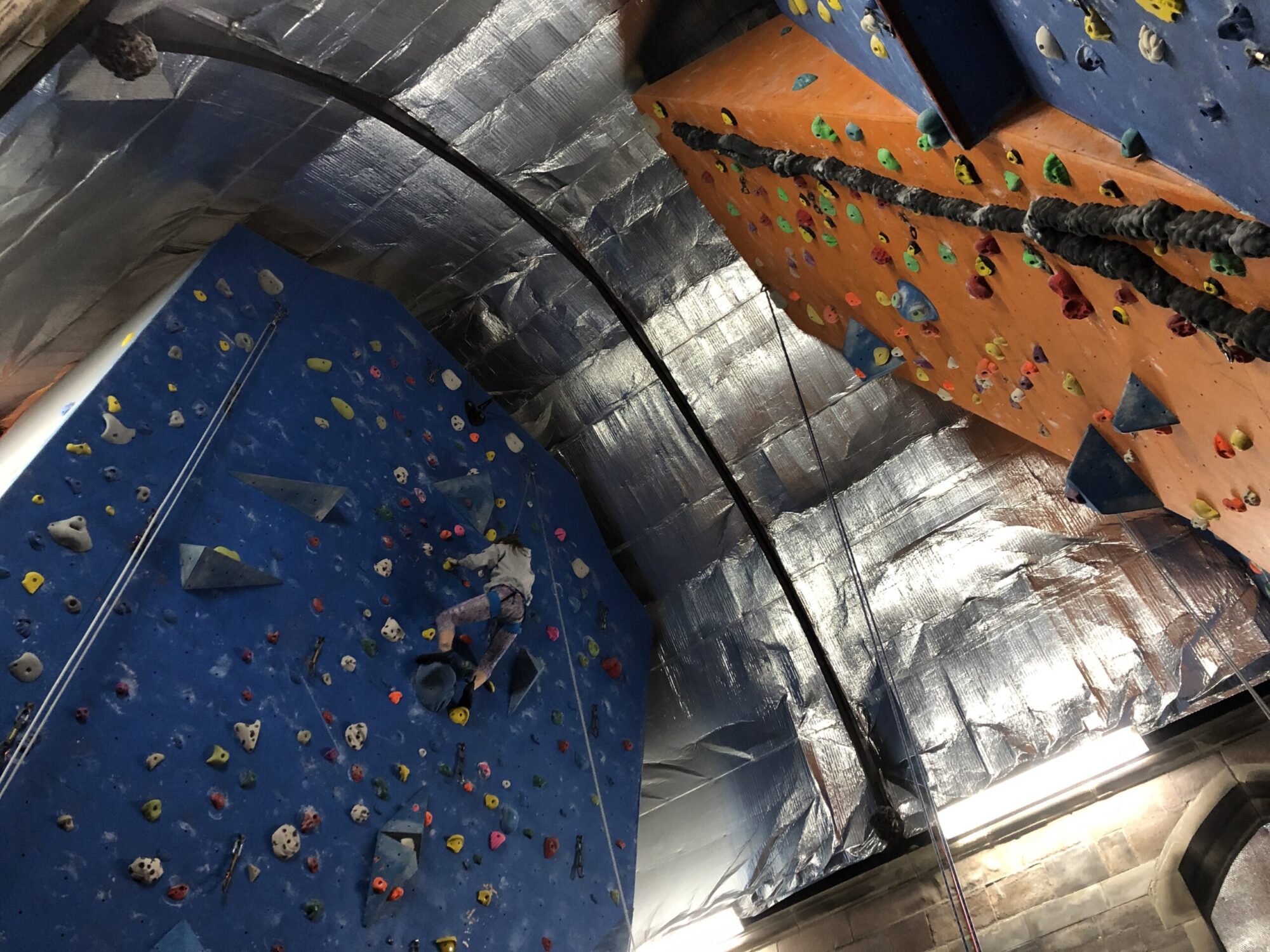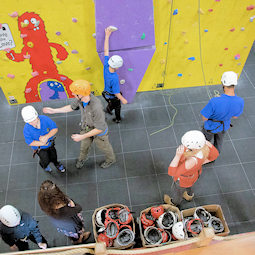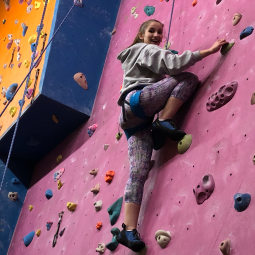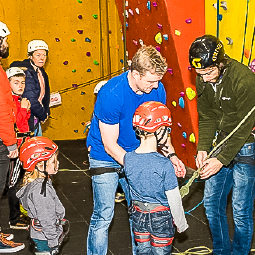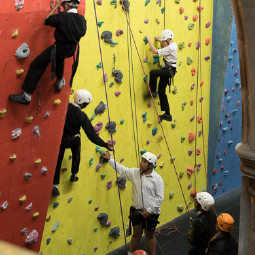Risks – “The British Mountaineering Council recognises that climbing and mountaineering are activities with a danger of personal injury or death. Participants in these activities should be aware of and accept these risks and be responsible for their own actions and involvement.”
Although the climbing centre is an artificial environment the risks involved are no less serious than when climbing outside on a crag or mountain. There is an additional risk that bolt-on holds can spin or break. It is the responsibility of everyone using the climbing centre to report any spinning or broken holds to a member of staff.
The soft flooring under the bouldering walls is designed to provide a more comfortable landing for climbers falling or jumping from the bouldering wall. THE SOFT FLOORING DOES NOT MAKE THE CLIMBING ANY SAFER. Broken and sprained limbs are common on this type of climbing wall despite the soft landing. Uncontrolled falls are likely to result in injuries to yourself or others.
Climbing beyond your capabilities on any wall is likely to result in a fall. Any fall may result in an injury despite the safety systems in place to avoid it. You must make your own assessment of the risks whenever you climb.
Our Duty of Care – The rules of the climbing centre are not intended to limit your enjoyment of the facilities. They are part of the duty of care that we, as operators, owe to you, the customer, by law. As such they are not negotiable and if you are not prepared to abide by them then the staff must politely ask you to leave.
Your Duty of Care – You also have a duty of care to act responsibly towards the other users of the centre. Statements of ‘Good Practice’ are posted around the centre adjacent to the relevant facilities. These describe the accepted methods of use and how customers would normally be expected to behave towards each other.
Unsupervised Climbing – Before you climb without supervision the centre expects you to be competent in the use of a safety harness, a suitable knot to attach a rope to the harness and a belay device to secure a falling climber or lower a climber from the wall using a rope. You are required to register to say that you know how to use the equipment, that you are prepared to abide by the Rules and that you understand the risks involved in your participation.
Anyone who has not registered is classed as a novice and must not climb without supervision.
Unsupervised climbing is just that! Staff will provide whatever help and advice they can, but instruction in the use of equipment or climbing techniques will only be provided where it has been booked and paid for in advance. If you are not confident in the use of any climbing equipment or technique then do not attempt to use it without the supervision of someone who is competent to do so.
Supervised Climbing – An adult who has registered at the centre may supervise up to two novice climbers as long as they are prepared to take full responsibility for the safety of those people. Groups of three or more novices must only be supervised by an instructor holding the relevant Mountain Leader Training qualification.
Children – All children in the centre must be supervised by an adult unless they have been assessed by the management and registered for unsupervised climbing.
Personal property and equipment – the management cannot accept responsibility for loss or damage to personal belongings or for the failure of personal equipment used whilst climbing at Alter Rock.
Lost property will be kept in storage for a maximum of 28 days before being disposed of, the management accept no responsibility for the safekeeping of lost property.
Rules
General Safety
Report to reception on each visit before you climb.
You must exercise care, common sense and self preservation at all times.
Report any problems with the walls, equipment or other climbers’ behaviour to a staff member immediately.
Be aware of the other climbers around you and how your actions will affect them.
Do not distract people while they are climbing or belaying.
Stand well back from the climbing walls unless you are belaying or spotting a climber. Never stand directly under someone who is climbing.
No access to the abseil platform unless accompanied by centre staff or an instructor.
Top Roping
Many of the climbs in the centre have top ropes already in place. Do not pull the top ropes down under any circumstances.
You must re-clip runners when being lowered of the routes to avoid rope swing.
Do not use figure of eight descenders or Italian hitch on centre ropes.
Do not lead on any of the top rope lines. Clipping a second rope through the top karabiner will cause rope wear on both yours and the centres ropes.
Leading
When using the lead walls you must supply your own appropriately rated dynamic rope. Do not use the centre’s top ropes for lead climbing.
Running belay attachments (runners) are already provided at intervals on most of the lead walls so you do not need your own ‘quick draws’. You must clip all of the runners on the route you are climbing.
Where there are bolts in place without runners attached you may climb using your own quick draws. You must clip all of the bolts on the line you are climbing.
At the top of the route the rope must be clipped through the screwgate karabiner and the gate secured or the rope must be clipped through the two snapgate karabiners before descending.
When Belaying
Always use a belay device attached to your safety harness with a locking karabiner. ‘Traditional’, or ‘body’ belaying is not acceptable.
Sandbags are provided to give support to people belaying a climber who is much heavier than they are. Direct belays from the sandbags are not acceptable. Return sandbags after use.
Always pay attention to what the climber is doing.
Always stand as close to the climbing wall as is practical. Sitting or lying down is not acceptable.
Bouldering
Always climb within your capabilities and descend by down climbing or at the very least, a controlled fall.
Never climb directly above or below another climber.
When Climbing
The tall walls are designed to be climbed using a rope for protection. Solo climbing is not acceptable on these walls. Always use a rope to protect yourself on these climbs.
Always use a safety harness to attach yourself to the rope.
Always tie the rope directly into the harness using a suitable climbing knot. Clipping in with a karabiner is not acceptable.
Please do not use loose chalk, use only chalk balls.
